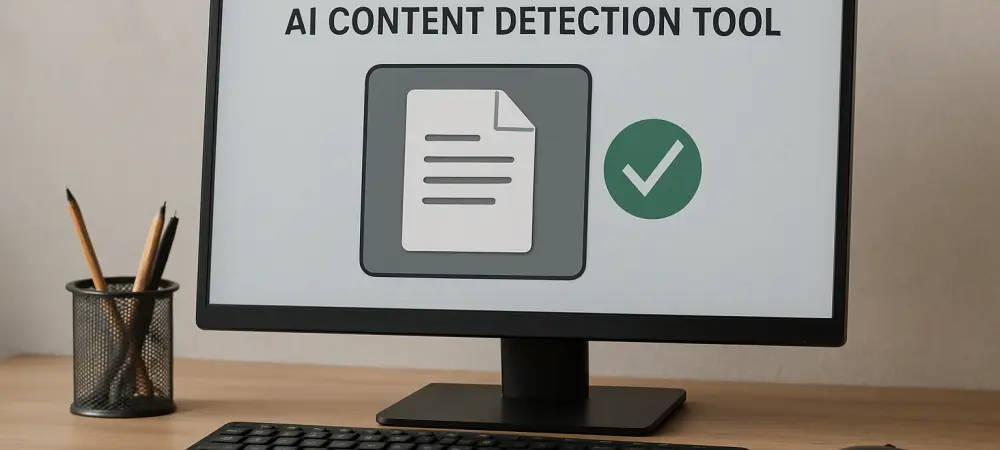In an era where artificial intelligence can craft prose, images, and videos so convincingly that they rival human creations, the line between authentic and synthetic content blurs alarmingly, posing a profound challenge to digital trust. As AI-generated material floods platforms, often undetected by the untrained eye, the significance of this issue in 2025 cannot be overstated, with advanced models like ChatGPT and GPT-4o revolutionizing content creation across sectors from journalism to marketing. This analysis delves into the escalating trend of AI content detection tools, exploring their rise, real-world applications, expert perspectives, future potential, and essential takeaways for navigating this complex landscape.
The Growing Need for AI Content Detection
Rising Adoption and Evolving Challenges
The surge in AI-driven content creation has reached unprecedented levels, with tools becoming integral to workflows in various industries. According to a recent Zapier report from 2025, over 60% of businesses now utilize AI for generating text, visuals, or multimedia, a figure that underscores the pervasive adoption of such technologies. This widespread use amplifies the urgency for detection mechanisms as distinguishing AI output from human work grows increasingly difficult. Sophistication in AI models like GPT-4o has further complicated detection efforts, with accuracy rates for identifying AI-generated text dropping below 70% for newer systems, as per studies conducted this year. These models mimic nuanced language patterns, making traditional indicators less reliable. The challenge is compounded by the rapid evolution of AI, pushing detection tools to continuously adapt to maintain relevance.
Beyond text, the scope of AI content now spans images and videos, intensifying the demand for comprehensive solutions. With deepfake videos and AI-crafted visuals becoming more realistic, the risk of misinformation skyrockets. This expanding frontier highlights an urgent need for robust, cross-medium detection strategies to safeguard digital authenticity.
Real-World Examples of Detection Demands
In journalism, the ability to identify AI-generated content is critical to combat misinformation and preserve public trust. Newsrooms face mounting pressure to verify sources as fabricated stories, often AI-produced, spread rapidly online. Detection tools have become indispensable in flagging suspicious content before it reaches audiences, ensuring editorial integrity.
Education represents another arena where detection is vital, particularly in curbing academic dishonesty. Students leveraging AI to produce essays or reports challenge traditional assessment methods, prompting institutions to adopt tools like Copyleaks, Originality.ai, and GPTZero. These platforms analyze text for signs of AI authorship, helping educators maintain fairness in evaluations.
A notable case study involves Google’s SynthID, a digital watermarking technology used in media industries to trace AI-generated visuals. By embedding invisible markers, SynthID enables creators and publishers to verify the origin of images, a practice gaining traction in advertising and entertainment. Such innovations illustrate how detection tools address practical needs across diverse fields.
Insights from Industry Leaders on Detection Strategies
Experts in AI ethics and cybersecurity emphasize the pivotal role of detection tools in maintaining digital trust. Many argue that as AI becomes more sophisticated, the risk of undetected synthetic content undermining credibility grows exponentially. Their consensus points to a pressing need for reliable systems to protect information ecosystems from manipulation.
However, limitations in current tools draw significant concern, with false positives often mislabeling human content as AI-generated. Industry leaders advocate for a balanced approach, combining automated detection with manual scrutiny to enhance accuracy. This hybrid method mitigates errors and ensures nuanced judgment where technology falls short.
Emerging solutions like blockchain authentication and generative watermarking are hailed as potential game-changers by thought leaders in digital content creation. These technologies promise tamper-proof verification, offering a layer of security that could redefine content integrity. Experts stress that investing in such innovations is crucial for staying ahead of AI advancements.
Future Horizons for AI Content Detection
Looking ahead, multimodal detection strategies are poised to address the diverse outputs of AI, spanning text, audio, and visual formats. As AI diversifies, tools must evolve to analyze patterns across these mediums simultaneously, ensuring comprehensive coverage. This shift could significantly bolster trust in sectors like journalism, where authenticity is paramount.
While the benefits of advanced detection are clear, challenges persist, including the race to match AI’s rapid sophistication. Over-reliance on technology also risks sidelining human intuition, which remains vital for context-specific analysis. Striking a balance between automated systems and manual oversight will be essential to avoid pitfalls in implementation.
Broader implications include integrating detection tools with technologies like IoT and 5G, potentially enabling real-time content verification across connected devices. However, ethical dilemmas arise in balancing innovation with authenticity, as overly stringent measures might stifle creative use of AI. Navigating these tensions will shape the trajectory of detection capabilities in the coming years.
Key Takeaways and Path Forward
Reflecting on this trend, it becomes evident that the swift evolution of AI content demands urgent and adaptive responses from detection technologies. Current tools, while instrumental, reveal weaknesses in accuracy and scope, often struggling with the latest AI models. Yet, emerging solutions like watermarking and blockchain offer promising avenues for enhancing reliability. The importance of a hybrid approach stands out as a critical lesson, with human oversight complementing software to uphold trust in digital spaces. Industries must recognize that no single solution suffices, and a layered strategy proves most effective in addressing varied challenges. This realization paves the way for more resilient systems. Moving forward, stakeholders are encouraged to prioritize investment in innovative detection solutions, ensuring adaptability to AI’s relentless progress. Collaborative efforts across sectors could foster standardized practices, while ethical considerations need to guide tool development. Embracing these steps promises a future where digital authenticity remains a cornerstone, even amidst AI’s transformative influence.

